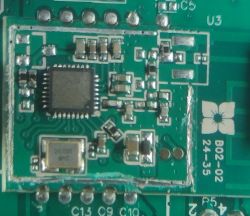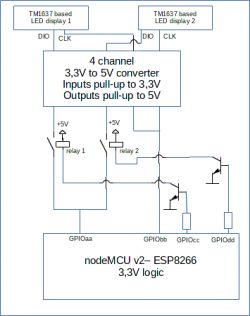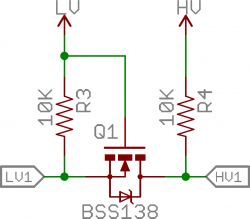I am currently using the circuit shown below to multiplex the input to two 7-segment LED displays from a single output of the ESP8266 chip. This is because I have ESPeasy software installed on it. Such software can only work with one such display, so I have to 'trick' ESPeasy into thinking it only works with one display, while it de facto works with two. All switching is done using the 'rules' defined in the ESPeasy configuration. The relays I use are small solid-state relays of the SSR type (this is so that there is no 'flopping' effect). But this solution is too expensive and too large compared to using MOSFETs, for example, such as the 2N7000.
.
Unfortunately I don't have enough knowledge hence I am asking Fellows on the forum. How can I replace the relays shown in the picture (along with the bipolar transistors controlling them) with MOSFETs ?
.
Unfortunately I don't have enough knowledge hence I am asking Fellows on the forum. How can I replace the relays shown in the picture (along with the bipolar transistors controlling them) with MOSFETs ?








